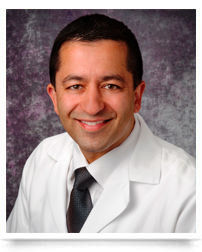About Me (In My Own Words)
UPDATE: Good news...
After my mitral valve repair (see original story below) in January of 2018, I continued to have a low EF of around 42% that was not recovering post op and also continued to have the same very high PVC burden (24% both before and after surgery). So, some members of my treatment team began to speculate if the PVC burden was a contributing or causal factor in my cardiomyopathy and low EF.
I had a PVC ablation this past April of 2019 at Mount Sinai Heart which was successful in reducing my PVC burden to 5% and has in turn resulted in recovery of my EF to 60% (normal!). In patients with bi-leaflet prolapse like me, PVCs are often unchanged by surgery because they often can originate from the papillary muscle scarring so might not diminish with surgery but can continue to have a negative impact on a patient's heart function.
ORIGINAL STORY:
I was diagnosed in early childhood with mitral valve prolapse, specifically Barlow's Disease (or Syndrome). Fast forward 45 years later, I had mitral valve repair, tricuspid valve repair, and LAA closure on January 15, 2018.
I have been under the continual care of a cardiologist for nearly my entire life. My cardiologist for the past 15 years had a "wait and see" approach. I had a severely dilated LA and a lot of PVCs, and had progressed over the years from mild to moderate to severe mitral regurgitation.
In 2017 there was a somewhat sudden decline in my EF shown on an echo. I was pretty much asymptomatic, but I became very concerned about whether or not I needed to have surgery to repair my mitral valve and requested additional testing, including a stress echo. In order to view the situation even more closely I had a cardiac MRI which showed mild LV dysfunction, and some scarring which is not uncommon in patients with Barlow's.
Watching and waiting with Barlow's until there is severe regurgitation and LV dysfunction is not the way to go. Statistically, mitral valve repair surgery when performed before extensive remodeling occurs, and before there is diminished ejection fraction with LV dysfunction indicates a better outcome. One of the guidelines for optimal outcome is an EF above 65% pre-surgery, and unfortunately mine was below 50%.
In summary, thankfully I had the surgery on January 15 of 2018 by two highly skilled surgeons, the repairs were successful, and I feel really good. My heart is continuing to heal, and hopefully there will be reverse remodeling and my LA will shrink back to a more normal size. However, I still have LV dysfunction due to the scarring and time will tell with my situation.
I am sharing my story to encourage anyone diagnosed with Barlow's to push back if waiting is recommended, and be proactive regarding the timing of repair surgery.
More Info About Me & My Heart
More About Me
-

I am from:
Atlanta, Georgia
-

My surgery date is:
January 15, 2018
-

I was diagnosed with:
Mitral Regurgitation
-

My surgery was:
Mitral Valve Repair
Tricuspid Valve Repair
-

My surgeon is:
Dr. Frederico Milla
-

My hospital is:
Piedmont Hospital, Atlanta, GA
 I am from: Atlanta, Georgia
I am from: Atlanta, Georgia My surgery date is: January 15, 2018
My surgery date is: January 15, 2018





